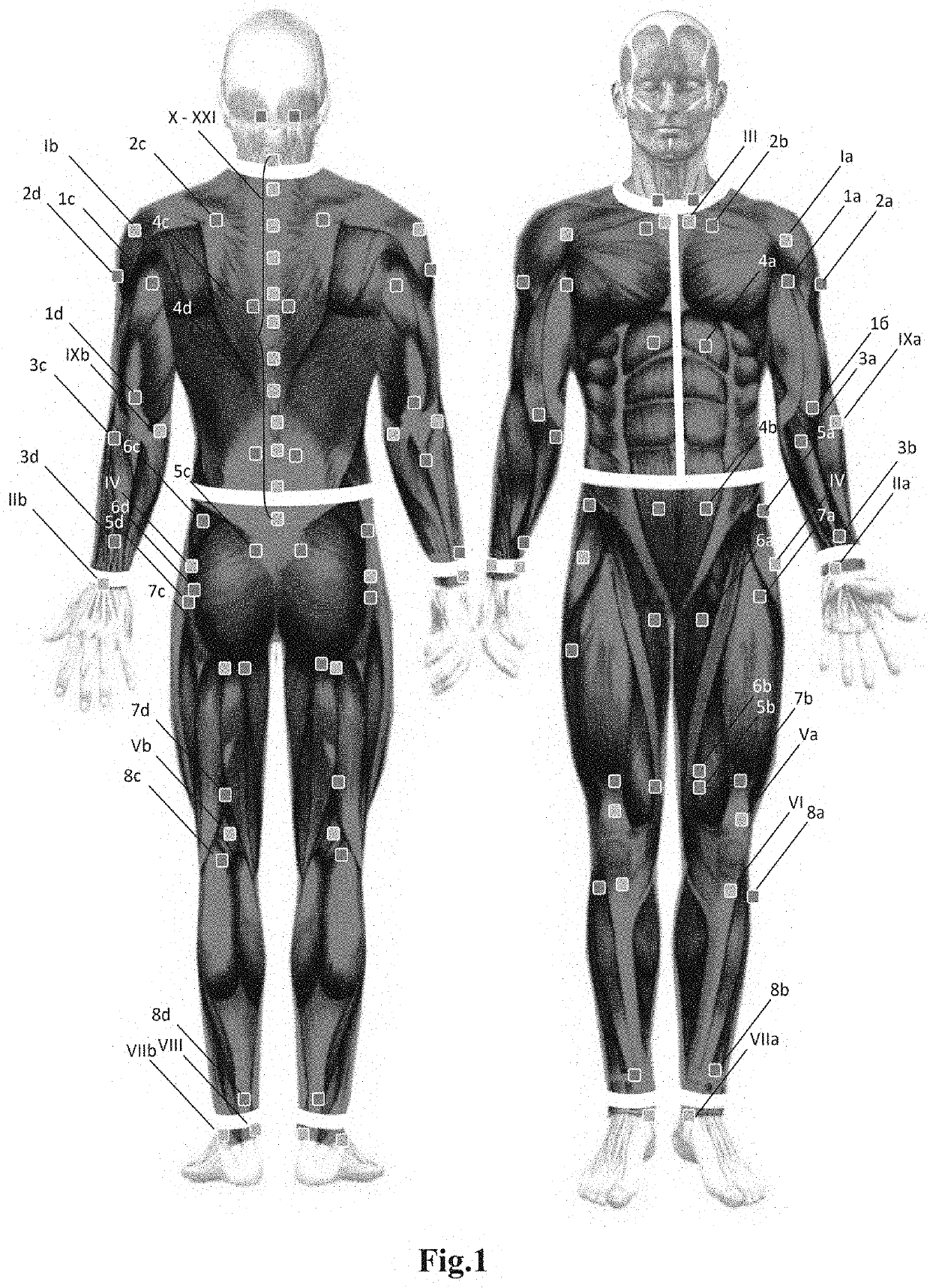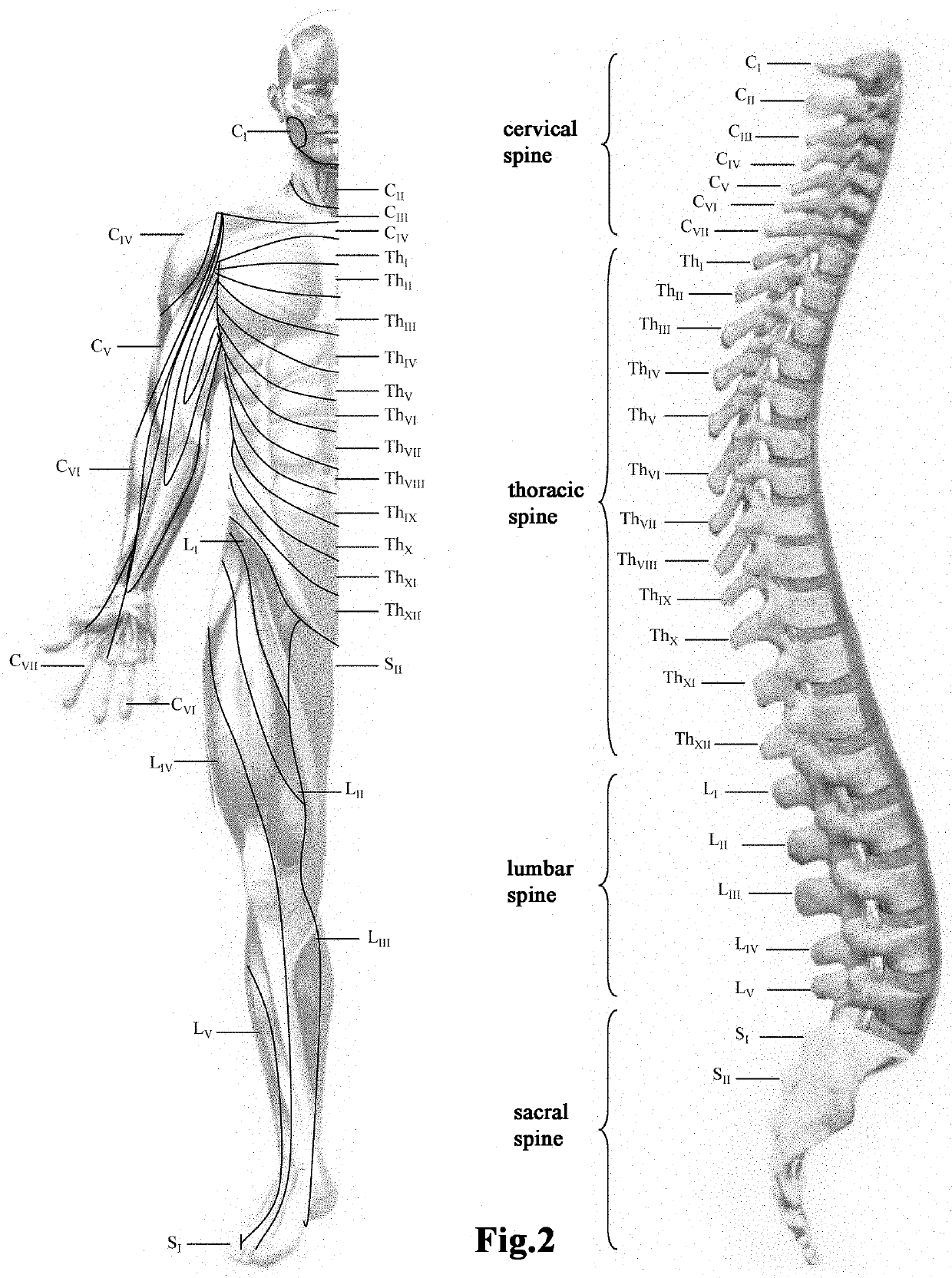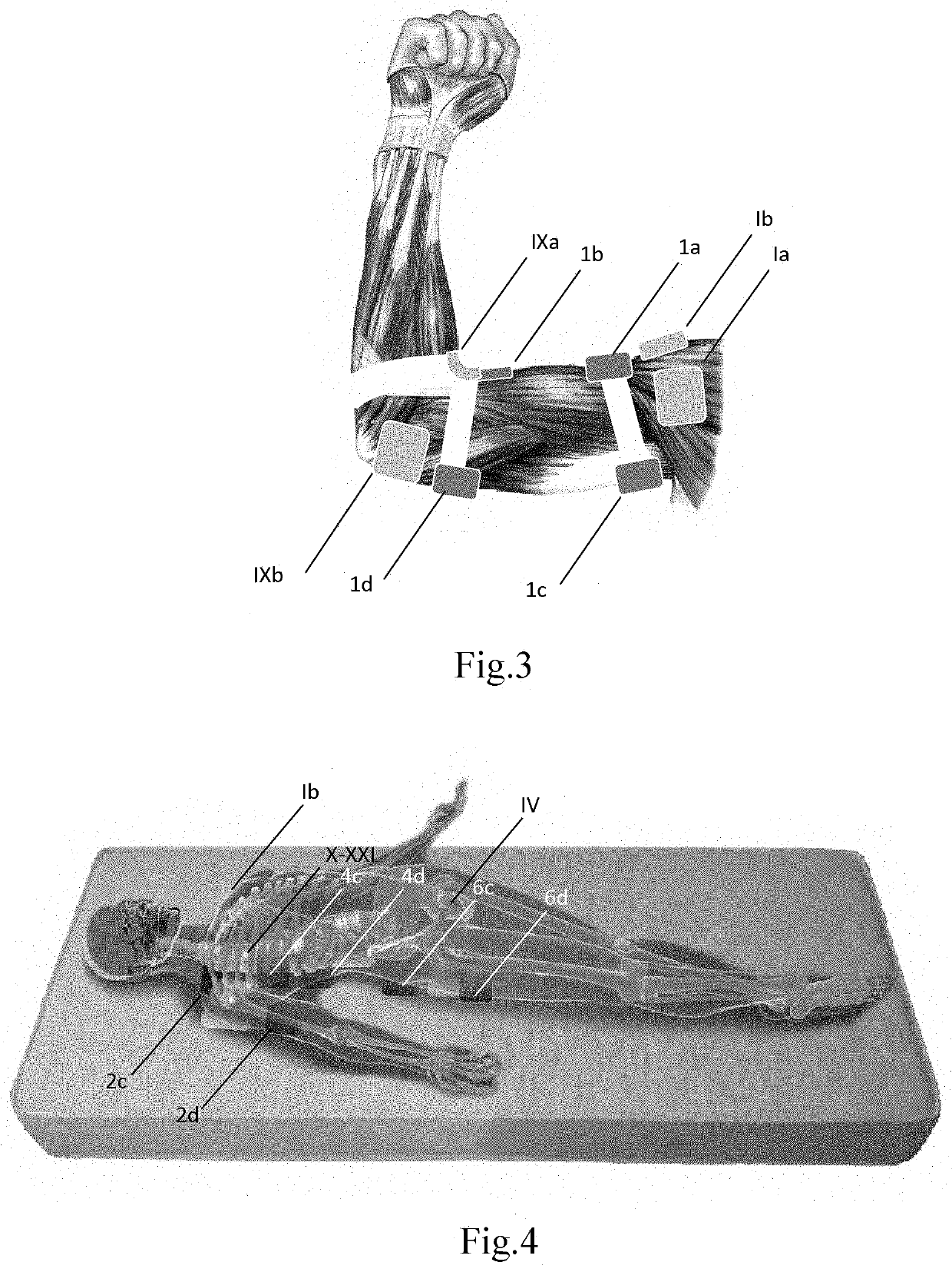Method for Relaxing Spasmed Muscles
- Summary
- Abstract
- Description
- Claims
- Application Information
AI Technical Summary
Benefits of technology
Problems solved by technology
Method used
Image
Examples
example 1
[0065]The patient is a 50 year old man. The spasmed muscle is the biceps muscle of one of the arms.
[0066]At the same time, spinal segments (CV-CVII) were acted upon by application of a warming compress at a temperature of 450° C. to 600° C. and on agonist / antagonist muscle pairs.
[0067]To stimulate muscles and heat the corresponding joints and ligaments, local influence by means of electrodes was used. In this example, a cuff (for example, with touch fasteners) is used, which was put on the shoulder with the location of the electrodes as described:
[0069]1a—the place of application of the electrode is the proximal part of the myogaster of the biceps muscle of one of the arms (venter) m.biceps brachii) at the place of its transition into the tendon (tendo m.biceps brachii) innervation (CV-CVII),
[0070]1b—the place of application of the electrode is the distal part of the myogaster of the biceps muscle of one of the arms (venter) m.biceps brachii) innervation (CV-CVI...
example 2
[0079]The patient is a 60 year old man. The patient is in supine position, unable to get up. The dorsal (extensor) muscles of the trunk are spasmed.
[0080]Segments (CV-CVII) of the cervical spine, segments (ThI-ThXII) of the thoracic spine, segments (LI-LV) of the lumbar spine and the SI segment of the sacral spine were constantly affected by applying a warming compress at a temperature of 45° C. to 60° C. The agonist / antagonist muscle pairs were acted on alternately in the setting of a constant effect on the segments of the spinal cord.
[0081]This example illustrates an option of the zonal application of electrodes, for example, embedded in the surface of the mattress, with the ability to move them in planes, which can be fixed, for instance, using touch fasteners. In this example, the following electrodes were used:
[0082]agonist muscles: deltoid muscle (venter m.deltoideus) and greater pectoral muscle; (mm pectoralis major);
[0083]innervation (CV-CVII);
[0084]antagonist muscles:
[0085]...
example 3
[0101]The patient is a 7 year old boy diagnosed with cerebral palsy in hyperkinetic form.
[0102]An asymmetrical tonic neck reflex (ATNR) is expressed: the head is turned to the left, tonicity of the extensor muscles of the extremities on the left is enhanced, and on the right tonicity of the evertor muscles of the extremities is enhanced.
[0103]Due to the presence of ATNR and in connection with hyperkinesis of the muscles of the tongue, swallowing processes are difficult, at the time of the beginning of the rehabilitation course self-assisted eating is impossible.
[0104]Movement disorders are characterized by involuntary movements and postures, which are represented by hyperkinesis of the torsion dystonia type against the background of increased muscle tone of extrapyramidal type. Dystonic attacks are intensified during voluntary movements, provoked by emotions.
[0105]Voluntary movements are awkward, uncoordinated, harsh. The presence of an asymmetrical tonic neck reflex makes it imposs...
PUM
 Login to View More
Login to View More Abstract
Description
Claims
Application Information
 Login to View More
Login to View More - R&D
- Intellectual Property
- Life Sciences
- Materials
- Tech Scout
- Unparalleled Data Quality
- Higher Quality Content
- 60% Fewer Hallucinations
Browse by: Latest US Patents, China's latest patents, Technical Efficacy Thesaurus, Application Domain, Technology Topic, Popular Technical Reports.
© 2025 PatSnap. All rights reserved.Legal|Privacy policy|Modern Slavery Act Transparency Statement|Sitemap|About US| Contact US: help@patsnap.com



